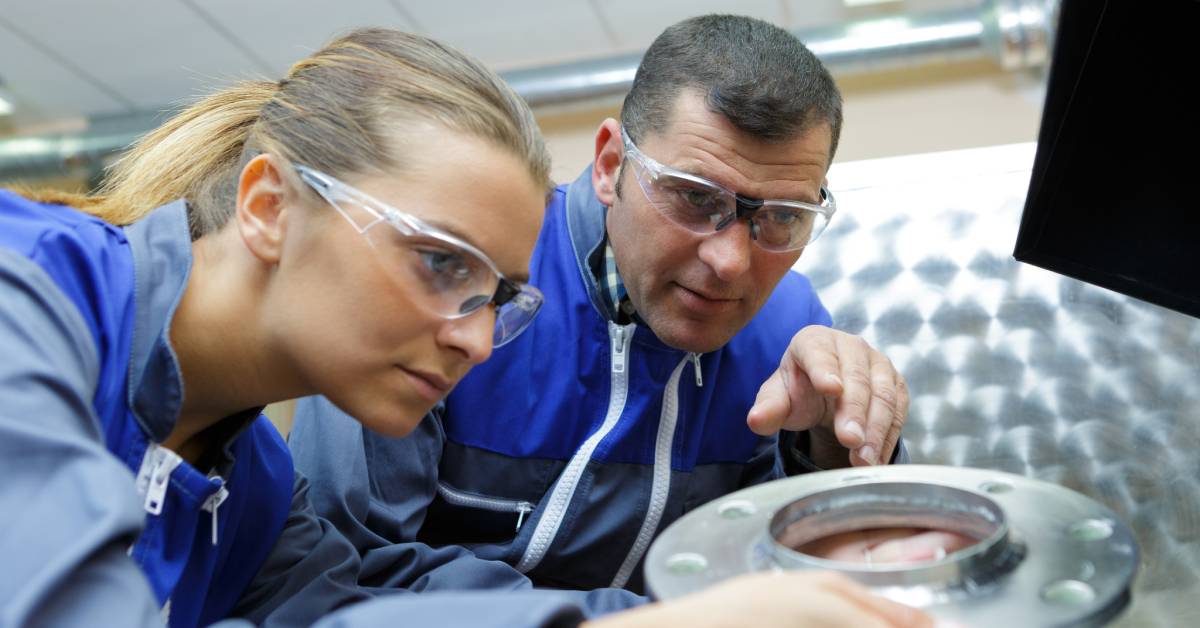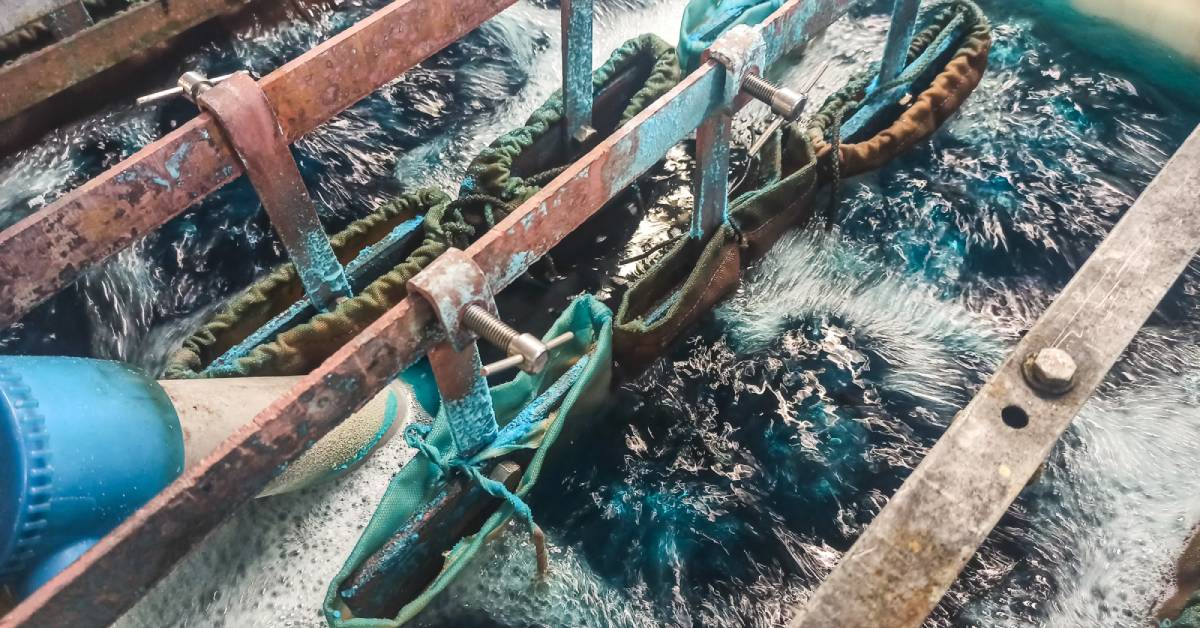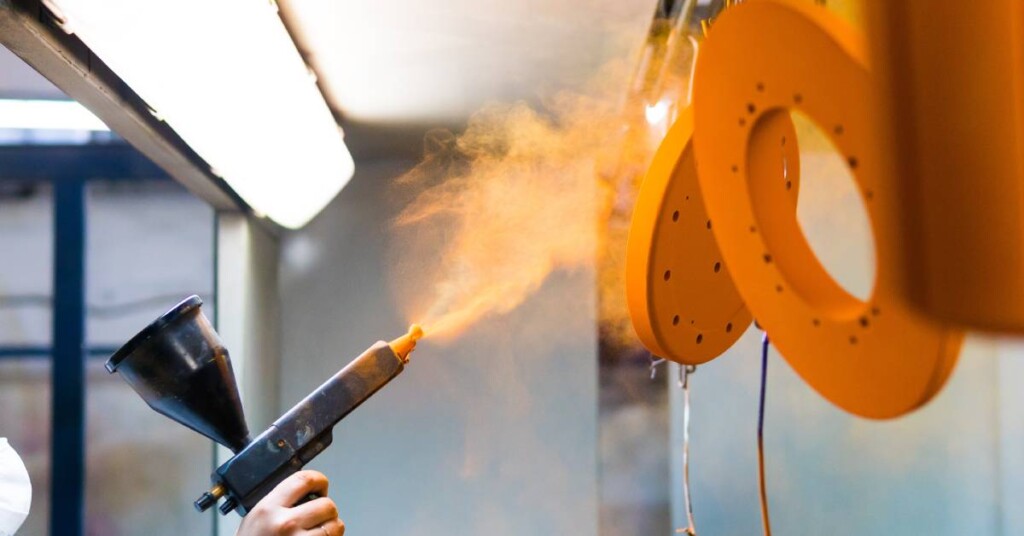One of the most crucial parts in the manufacturing of metal components for many industries and applications is the selection of a metal finish. There are many different types of industrial metal finishes to choose from, each with its own functional and physical advantages. Below, we’ll walk you through the basics of industrial metal finishes, including the most common types, applications, and more.
What Is an Industrial Metal Finish?
An industrial metal finish refers to a coating or treatment applied to the surface of a metal to improve its appearance, durability, and functionality. These finishes can provide protection against environmental factors, enhance aesthetic appeal, and sometimes alter the physical properties of the metal. Industrial metal finishes are common in various industries, including automotive, aerospace, construction, and electronics, to name a few.

Overview of the Most Common Types of Industrial Metal Finishes
When it comes to metal finishing, several techniques stand out due to their effectiveness and popularity. Each method offers unique benefits and is suitable for different applications. Below, we will explore some of the most common kinds of industrial metal finishes, providing detailed explanations and visual examples to help you make informed decisions for your projects.
Powder Coating
Industrial powder coating is a widely common finish that applies a dry powder to the metal surface and then cures it under heat. This process creates a hard, durable finish that is resistant to chipping, scratching, and fading. Powder coating is available in various colors and textures, making it a versatile choice for many applications.
One significant advantage of a powder coating is its environmental friendliness. Unlike traditional liquid coatings, powder coating produces few volatile organic compounds (VOCs) and waste. Also, operators can collect and reuse the overspray, further reducing waste. This makes powder coating an attractive option for manufacturers looking to reduce their environmental footprint while achieving a high-quality finish.
Chromate
Chromate conversion coating is a chemical treatment used to protect aluminum and other metals from corrosion. This finish involves immersing the metal in a chromate solution, which forms a thin, protective layer on the surface. Chromate coatings provide excellent corrosion resistance and can also enhance the adhesion of subsequent coatings, such as paint or powder coating.
The aerospace and automotive industries are two of the most frequent users of chromate conversion coatings to protect metal components from harsh environmental conditions. While environmental concerns have led to the development of alternative treatments, chromate coatings remain a popular choice due to their proven effectiveness.
Anodizing
Anodizing is an electrochemical process that converts the metal surface into a durable, corrosion-resistant oxide layer. This finish can create a variety of colors and textures and is common for aluminum metal finishes. Anodizing not only enhances the appearance of the metal but also increases its resistance to wear and corrosion.
The anodizing process involves immersing the metal in an electrolytic solution and passing an electric current through it. This causes the metal to oxidize and form a protective layer. Operators can control the thickness of the anodized layer to meet specific performance requirements, making it a versatile choice for various applications.
Electroplating
Electroplating uses an electric current to deposit a thin layer of metal onto the surface of another metal. This finish enhances the appearance, corrosion resistance, and conductivity of metal components. Common electroplating materials include gold, silver, nickel, and zinc.
In addition to improving aesthetics, electroplating can provide functional benefits, such as increased hardness and reduced friction. This makes it a popular choice for components in the automotive, electronics, and jewelry industries. However, electroplating requires careful control of the plating solution and process parameters to achieve consistent, high-quality results.

Brushed and Polished Finishes
Manufacturers achieve brushed and polished finishes through mechanical processes that alter the surface texture of the metal. A brushed finish involves creating fine, parallel lines on the metal surface using abrasive materials. This technique creates a matte, satin-like appearance that reduces the visibility of fingerprints and scratches.
Polished finishes, on the other hand, involve buffing the metal surface to a high shine. This process removes imperfections and creates a smooth, reflective surface. A polished finish is common in decorative applications, such as jewelry and architectural elements, where a sleek, glossy appearance is desired.
Bare Metal Finishing
Bare metal finishing involves leaving the metal surface untreated, allowing its natural appearance to shine through. This finish is typically used for stainless steel and other corrosion-resistant metals that do not require additional protection. Bare metal finishes can showcase the raw beauty of the material, highlighting its texture and color.
While bare metal finishes may require more maintenance to prevent tarnishing and corrosion, they offer a minimalist aesthetic that is popular in modern design. Industrial and architectural applications frequently use this finish for projects where the natural look of the metal is a key design element.
The Applications and Benefits of Different Finishes
Different metal finishes are suited to certain applications, each offering unique benefits. For example, powder coating is ideal for outdoor furniture and automotive parts due to its durability and resistance to environmental factors. Anodizing is common in the aerospace industry for its lightweight and corrosion-resistant properties.
The electronics industry favors electroplating for its ability to enhance conductivity and provide a decorative finish. Brushed and polished finishes are popular choices for consumer products where aesthetics are a priority, such as kitchen appliances and jewelry. Understanding the specific benefits and applications of each finish can help manufacturers, designers, and metalworkers make informed decisions for their projects.
Choosing the Ideal Industrial Metal Finish
Now that you know the different types of industrial metal finishes, their applications, and their benefits, how do you choose the right one for your process? Selecting the ideal metal finish involves consideration of several factors, such as the component’s intended use, environmental conditions, and aesthetic preferences. It’s crucial to assess your project’s specific requirements and the properties of each finish.
For example, if corrosion resistance is a priority, anodizing or chromate conversion coating may be ideal, while powder coating offers a durable and eco-friendly option. Decorative finishes like brushed, polished, or electroplated coatings can achieve a specific desired appearance. Consulting with metal finishing experts, like those at Sytech Inc., can further guide you in selecting the best finish for your needs.
Find Industrial Metal Finishing Services With Sytech Inc.
Industrial metal finishes play a vital role in enhancing the performance, durability, and appearance of metal components. By understanding the different types of finishes and their applications, manufacturers, designers, and metalworkers can make informed decisions that meet their specific needs.
If you are looking for expert metal finishing services, consider partnering with Sytech. Our team of experienced professionals can help you achieve the perfect finish for your projects, ensuring quality and precision every step of the way. Contact us today to learn more about our services and how we can assist you in transforming your metal components.
